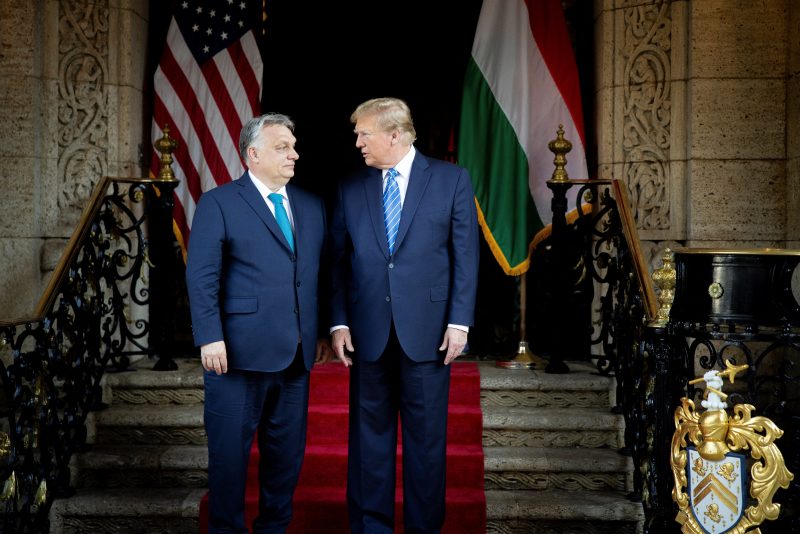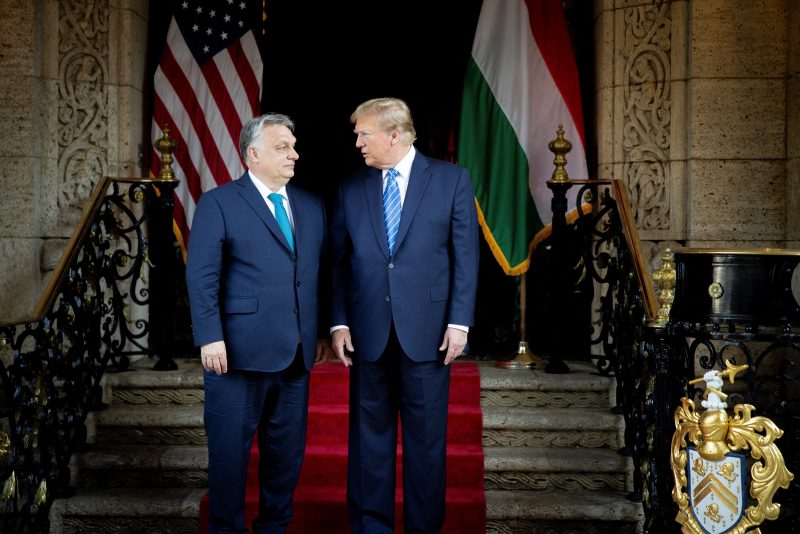
Former president Donald Trump met with Hungarian Prime Minister Viktor Orban on Friday, continuing his embrace of autocratic world leaders as he seeks reelection for the American presidency.
Orban’s trip to the United States also included a stop in Washington, where he delivered remarks at the Heritage Foundation, which has close ties to Trump. That appearance was on Thursday, the same day as President Biden’s State of the Union address, which took place in the Capitol just a few blocks away from the conservative think tank’s headquarters.
It marked an extraordinary move: a foreign leader paying a visit to the United States, including making a stop in the nation’s capital, without meeting with the sitting president and instead meeting with his political rival.
Trump has repeatedly praised Orban over the years, frequently praising what he sees as strength in leadership on the campaign trail. He also hosted Orban at the White House in 2019, an invitation the previous two American presidents had purposefully not extended.
Orban has worked to undermine key democratic institutions in Hungary since coming into power in 2010. A self-proclaimed proponent of “illiberal” Christian democracy, he’s championed restrictions on LGBTQ+ rights and immigration while cracking down on the country’s judiciary and the press. He’s also garnered praise from conservative populists and conservative institutions in the United States, reinterpreting Trump’s longtime slogan and frequently saying “Make Europe Great Again” in public remarks.
After appearing at the Heritage Foundation in Washington, Orban wrote on X that he discussed the “common ground for cooperation between the conservative forces of Europe and the US,” in his remarks. “Supporting families, fighting illegal migration and standing up for the sovereignty of our nations,” he said.
The Hungarian leader then traveled from Washington to Palm Beach, Fla., to see Trump at his Mar-a-Lago estate, in a meeting on Friday that displayed some of the symbolism typically reserved for two sitting world leaders.
The men formally greeted each other at the steps of the estate, posing on a red carpet flanked by American and Hungarian flags.
Inside, with their parties facing one another at long conference tables, the two men held meetings to discuss “a wide range of issues affecting Hungary and the United States, including the paramount importance of strong and secure borders to protect the sovereignty of each nation,” according to the Trump campaign. There was an evening concert inside the compound, where Trump took the stage to praise Orban.
“There’s nobody that’s better, smarter or a better leader than Viktor Orban,” Trump said Friday night. The former president, in an apparent nod to the Hungarian leader’s autocratic approach, went on to say Orban is “a noncontroversial figure because he says, ‘This is the way it’s going to be,’ and that’s the end of it. Right? He’s the boss. No, he’s a great leader.”
Orban lent his support to Trump on X, saying that the world needs “leaders in the world who are respected and can bring peace. He is one of them! Come back and bring us peace, Mr. President!”
President Biden slammed the Trump-Orban meeting on Friday, saying it demonstrated his main rival’s authoritarian tendencies.
“You know [who Trump is] meeting with today down at Mar-a-Lago? Orban of Hungary, who stated flatly he doesn’t think democracy works,” Biden said at a campaign stop in Pennsylvania. “He’s looking for dictatorship … that’s who he’s meeting with. I see a future where we defend democracy, not diminish it.”
The president’s remarks came a day after he hosted Swedish Prime Minister Ulf Kristersson at the State of the Union address to mark Sweden joining the NATO alliance. Orban had initially resisted Sweden’s bid to join the alliance as well as the European Union’s aid for Ukraine amid its war with Russia. He’s also maintained close ties with the Kremlin and Russian President Vladimir Putin, despite continued tensions between Russia and the West as a result of the war.
Marianne LeVine contributed to this report.

